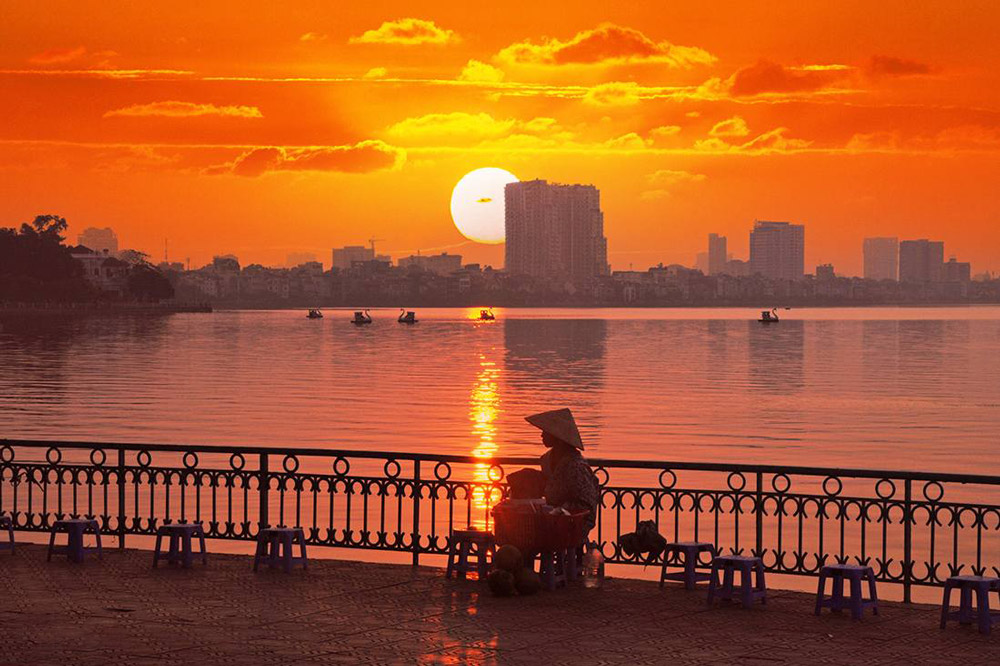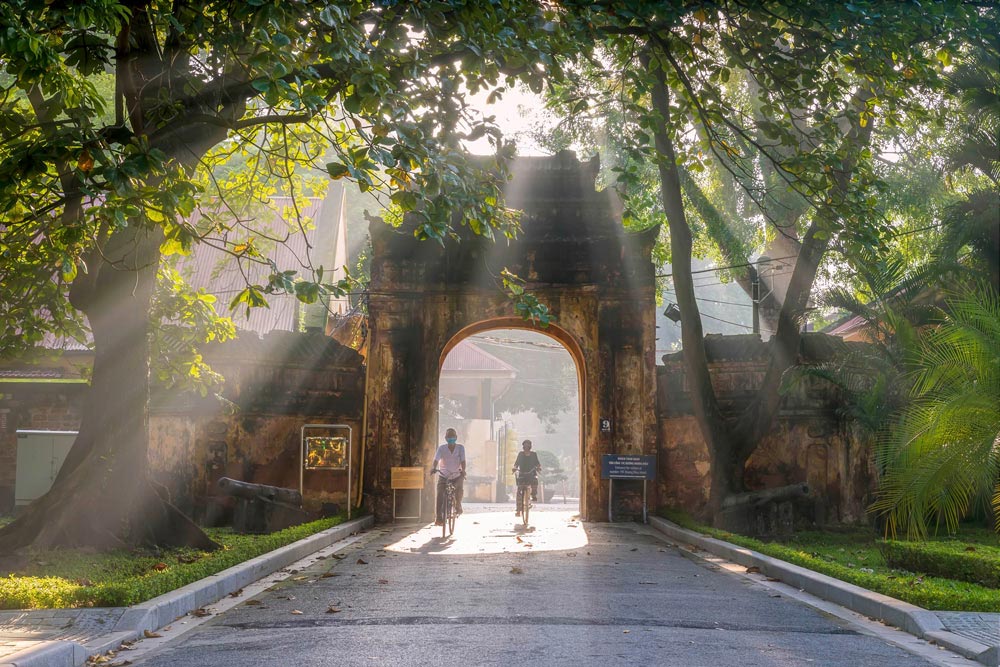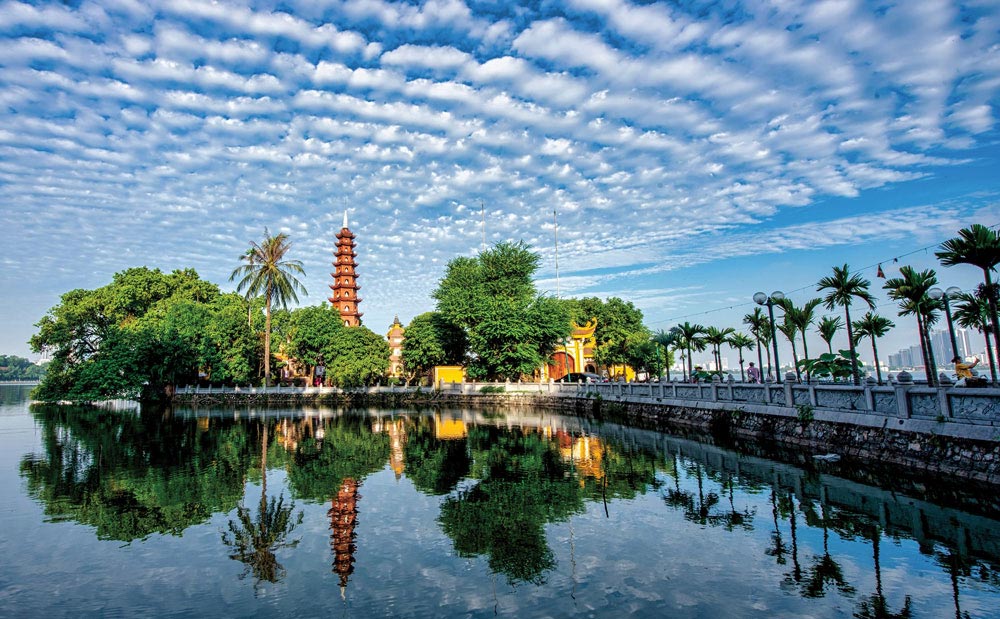Planning your trip to Hanoi and not sure where everything is? You’re not alone. The Vietnamese capital can feel like a maze at first glance — a blend of ancient streets, serene lakes, and fast-growing modern districts all woven together. But once you take a closer look at a Hanoi map, the city starts to make sense — and that’s when the real adventure begins. Whether you’re drawn to the history and street food of the Old Quarter, the French charm of Ba Dinh, or the café-lined shores of West Lake, each neighborhood offers its own rhythm and personality. In this 2025 guide, we’ll walk you through the key districts, help you find the best areas to stay, and share local tips to make navigating Hanoi not just easy, but exciting.
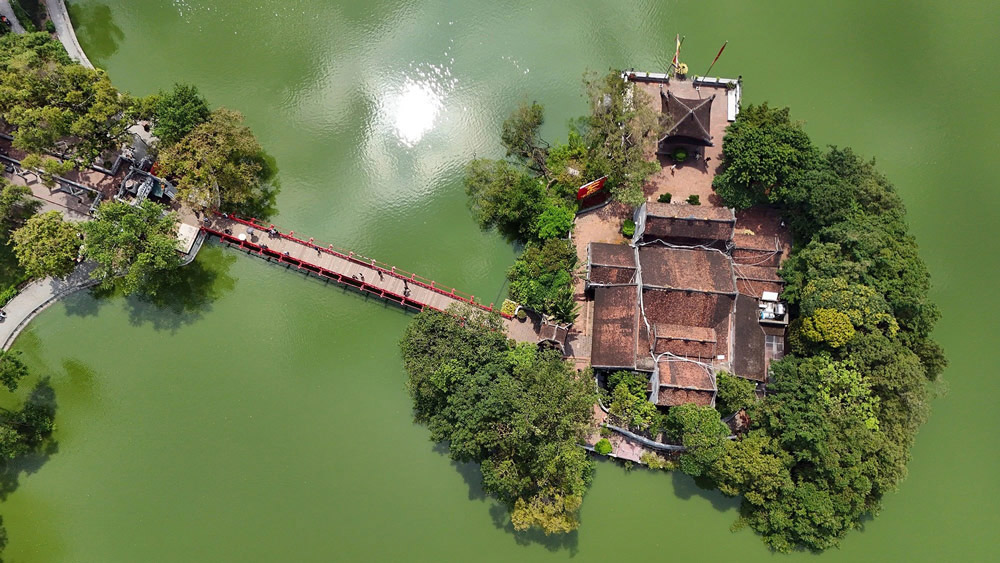
Planning a trip to a new city can feel a little intimidating at first. The names are unfamiliar, the streets seem to twist in every direction, and everything feels like an adventure waiting to happen — if only you know where to start. That’s where a good Hanoi map comes in. It’s not just about finding your way from point A to point B; it’s about discovering the character of the city — its lakes, its alleyways, its landmarks, and all the small local spots that make Hanoi so unforgettable. Think of it as your personal treasure map leading you to hidden cafés, lively street markets, and peaceful temples tucked behind the noise of motorbikes.
And there’s no better time to explore than in October 2025, when Hanoi is at its most beautiful — cool breezes, golden leaves, and the scent of coffee drifting through every street. This guide is your digital compass, taking you from the big-picture Hanoi on the world map right down to the maze-like charm of the Old Quarter. By the end, you’ll not only know where to go but how to move around with the confidence of a local.
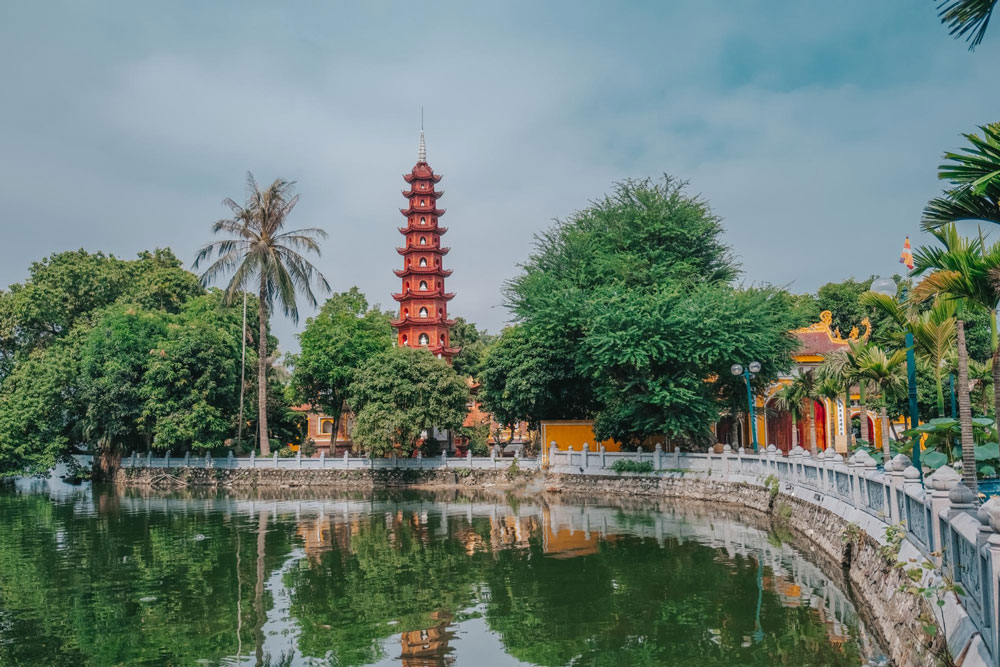
Before diving into the narrow alleys and hidden cafés, it helps to take a step back and see where Hanoi sits on the map — not just in Vietnam, but in the world. Understanding its location gives you a sense of how this vibrant city fits into the bigger travel picture and why it feels so unique among Southeast Asian destinations.
If you trace your finger across a world map, you’ll find Hanoi nestled in the heart of Southeast Asia, serving as the capital city of Vietnam. The country stretches along the eastern edge of the Indochina Peninsula, bordered by China to the north, Laos and Cambodia to the west, and the East Sea (known internationally as the South China Sea) to the east. Hanoi lies roughly on the same latitude as cities like Kolkata and Cairo — which helps explain its pleasant, subtropical climate. Its strategic position has made it a crossroads of culture, history, and trade for more than a thousand years, blending ancient traditions with modern energy.
Zoom in a little closer on a Vietnam map, and you’ll see Hanoi in the northern part of the country, about 1,700 kilometers north of Ho Chi Minh City. As the political and cultural capital of Vietnam, it’s the beating heart of the nation — a city where history and heritage are woven into every corner. Hanoi is also the main travel hub for exploring the north, acting as the perfect gateway to Vietnam’s most iconic destinations. From here, you can embark on a cruise through the emerald waters of Ha Long Bay, trek through the misty mountains of Sapa, or visit ancient villages along the Red River Delta.
So when you look at your Hanoi map, remember you’re not just pinpointing a city — you’re locating the starting point of countless journeys through the landscapes, flavors, and stories that define northern Vietnam.
Once you’ve taken a look at the Hanoi district map, you’ll see that the city isn’t too big — but every neighborhood has its own charm, rhythm, and personality. From the historic heart to the peaceful lakeside areas, each district offers a different experience. Here’s a simple breakdown to help you decide where to stay and what to expect when exploring Hanoi.
If you’re wondering “What area of Hanoi is best to stay in?”, the answer is almost always Hoàn Kiếm District. This is the city’s lively center — the beating heart of Hanoi — and home to most of its famous attractions, street food spots, and charming hotels.
At the center of it all is the Old Quarter, a maze of narrow streets that buzz with motorbikes, market stalls, and the scent of sizzling street food. It’s chaotic in the best way possible and the perfect place to feel the city’s pulse. Just a few steps away lies the French Quarter, with tree-lined boulevards, elegant colonial architecture, and luxury shops — a completely different atmosphere but still within walking distance. And of course, you can’t miss Hoan Kiem Lake, the scenic heart of the district. Locals gather here for morning exercise, evening walks, or simply to enjoy the calm amid the city’s energy. If it’s your first time in Hanoi, Hoan Kiem is where you’ll want to be.
Move northwest on your Hanoi map, and you’ll find Ba Đình District, the city’s political and historical core. This is where the government operates — but it’s also where many of Vietnam’s most important landmarks are located. Within walking distance, you can visit the Ho Chi Minh Mausoleum Complex, the Presidential Palace, and the ancient Imperial Citadel of Thang Long, a UNESCO World Heritage Site.
Compared to the busy Old Quarter, Ba Đình feels more spacious and peaceful, with wide avenues and leafy parks. It’s a great area for travelers who enjoy history and culture but prefer a quieter environment to unwind at the end of the day.
If you follow your Hanoi district map a bit further north, you’ll reach Tây Hồ, or West Lake — the city’s most scenic and relaxing area. Centered around a massive freshwater lake, it’s where many expats and families choose to live. Here, you’ll find stylish restaurants, rooftop bars, yoga studios, and cozy cafés overlooking the water.
The vibe in Tây Hồ is calm and contemporary — a perfect contrast to the rush of central Hanoi. It’s ideal for travelers looking for comfort, open space, and a slower pace of life. The area is also home to several beautiful temples and pagodas, including the Tran Quoc Pagoda, the oldest in Hanoi, which offers stunning views at sunset.
Each of these districts tells a different story, and together, they make up the unique spirit of the city you’ll see on every Hanoi map — dynamic, diverse, and full of character.
Hanoi's Old Quarter is not merely a tourist district; it is a living, breathing organism, a sprawling museum where a millennium of commerce, culture, and daily life collides in a vibrant, chaotic symphony. Its origins lie in the legendary "36 Streets," a collection of guild streets established centuries ago where artisans and merchants gathered to produce and sell specific wares—from silver and silk to bamboo and traditional medicines. This legacy of specialized craftsmanship still echoes in the street names and the very soul of the quarter, creating a dense, layered experience that can be as bewildering as it is bewitching.
This guide is designed to demystify that charming labyrinth. To navigate this maze effectively, one must first establish a mental map. The key is to anchor your exploration around three unmissable compass points: the serene expanse of Hoan Kiem Lake to the south, the neo-Gothic spires of St. Joseph's Cathedral to the west, and the sprawling, commercial hub of Dong Xuan Market to the north. While a digital map is an indispensable tool for pinpointing a specific alley or address, this report provides the crucial contextual map—the narrative that explains what you are seeing and why it matters.
To truly understand the Old Quarter is to appreciate its fundamental duality. By day, it reveals a nostalgic, almost serene beauty, where a peaceful morning stroll uncovers the quiet allure of ancient temples and the rhythms of local life. As dusk falls, however, the quarter undergoes a dramatic metamorphosis. The same streets transform into a vibrant, electrifying hub of commerce, cuisine, and social communion, buzzing with the energy of night markets and streetside beer halls. The time of day one chooses to explore is as critical as the location itself, offering two distinct yet equally authentic experiences of the same space.
This duality extends to its world-renowned culinary landscape. The Old Quarter's food culture is a direct evolution of its guild street heritage, built upon a profound respect for specialization. The most revered eateries are not those with sprawling menus, but rather the humble, often generations-old establishments that have dedicated themselves to perfecting a single dish. From a specific type of noodle soup to a particular sandwich, this cult of the single-dish specialist is the defining characteristic of Hanoian cuisine. Exploring the food of the Old Quarter is therefore not just about finding a meal; it is a cultural journey into a tradition of focused mastery.
The area surrounding Hoan Kiem Lake serves as the spiritual and social heart of Hanoi. For most visitors, it is the primary entry point into the city's historic core, a tranquil and beautiful reference point that offers a moment of calm amidst the exhilarating buzz of the surrounding streets.
Hoan Kiem Lake (Lake of the Returned Sword)
Hoan Kiem Lake is the undisputed centerpiece of Hanoi, a serene body of freshwater steeped in a foundational national legend. Its name, which translates to "Lake of the Returned Sword," originates from a 15th-century tale in which Emperor Lê Lợi was gifted a magical sword by the Golden Turtle God to defeat Chinese invaders. After securing Vietnam's independence, the emperor was boating on the lake when the giant turtle emerged to reclaim the divine weapon, cementing the lake's status as a powerful symbol of patriotism, peace, and national resilience.
Today, its historical significance is matched by its role as a vital community hub. In the quiet hours of the early morning, its tree-lined shores are filled with locals practicing tai chi and jogging. Throughout the day, it is a popular spot for couples and families to enjoy a leisurely stroll. On weekends, the surrounding roads are closed to vehicular traffic, transforming the entire area into a massive pedestrian zone bustling with street performers, families, and friends, offering some of the city's best people-watching.
Ngoc Son Temple (Temple of the Jade Mountain)
Accessible via the iconic, scarlet-painted Huc Bridge (Bridge of the Rising Sun), Ngoc Son Temple sits on the small Jade Island in the northern part of Hoan Kiem Lake. This picturesque temple is a cultural and historical gem, dedicated to the 13th-century military hero General Trần Hưng Đạo, who repelled Mongol invasions, as well as to the scholar Van Xuong and the patron saint of physicians, La To. Architecturally, the temple complex includes the Pen Tower at its entrance and offers a peaceful sanctuary from the city's noise. Inside, visitors can explore the ornate altars and view a remarkably well-preserved specimen of a giant soft-shell turtle, a tangible link to the lake's enduring legend.
Thang Long Water Puppet Theatre
Located on the northeastern edge of the lake, the Thang Long Water Puppet Theatre offers an enchanting glimpse into a unique and ancient Vietnamese art form. Water puppetry originated in the rice paddies of the Red River Delta centuries ago and has evolved into a sophisticated theatrical performance. The shows are not merely for tourists but are a significant cultural tradition, depicting scenes of rural life, historical events, and national legends like that of the Returned Sword. Puppeteers, hidden behind a screen, manipulate lacquered wooden puppets over a pool of water, accompanied by a live orchestra playing traditional Vietnamese instruments. The 50-minute performances are vibrant, charming, and accessible to all ages. Given its popularity, it is highly recommended to book tickets in advance, especially during peak tourist seasons, as shows often sell out.
Hoa Lo Prison Relic (The "Hanoi Hilton")
A short walk from the southern end of Hoan Kiem Lake, the Hoa Lo Prison Relic is one of Hanoi's most poignant and important historical sites. The prison tells a dark, dual history. It was originally constructed by the French colonialists in the late 19th century to imprison and torture Vietnamese political prisoners and independence fighters. The exhibits from this era are harrowing, showcasing the brutal conditions and resilience of the Vietnamese people. Later, during the Vietnam War, the prison was used to detain American prisoners of war, who sardonically nicknamed it the "Hanoi Hilton". The museum presents both chapters of its history, offering a powerful and sobering look into Vietnam's long struggle for independence. A visit provides a crucial, if difficult, context for understanding the nation's past.
Bún Chả Hương Liên (The "Obama Bún Chả")
While technically located in the adjacent French Quarter, Bún Chả Hương Liên is an essential culinary pilgrimage for any visitor to Hanoi and is easily reached from the lake area. The restaurant was catapulted to global fame in 2016 when U.S. President Barack Obama and celebrity chef Anthony Bourdain shared a meal here. The event is immortalized in photos and even a preserved table setting. The specialty, bún chả, is a quintessential Hanoian dish consisting of grilled fatty pork slices and savory pork patties served in a bowl of tangy, slightly sweet broth made from fish sauce, vinegar, and sugar. It is accompanied by a plate of fresh rice vermicelli noodles and a basket of aromatic herbs. The "Combo Obama," which includes a bún chả, a large fried seafood spring roll, and a bottle of Hanoi beer, remains a popular order.
Chè Bốn Mùa (Four Seasons Dessert)
For an authentic taste of local sweets, Chè Bốn Mùa is a beloved institution that has been serving traditional Vietnamese desserts, known as chè, for decades. Often crowded with locals—a reliable sign of quality—this small shop offers a variety of sweet soups and puddings served either hot or cold. It is the perfect place to sample classic Hanoian desserts. A highly recommended choice is the lotus seed and black jelly sweet soup, a delicate and refreshing concoction that exemplifies the subtle flavors of northern Vietnamese sweets. A visit here provides a delightful contrast to the savory street food found elsewhere in the quarter.
Address: 4 Hang Can Street, Hoan Kiem District, Hanoi
Direction: https://maps.app.goo.gl/ASy8mtMQiFerhnMo9
Opening Hours: Approximately 10:00 AM - 10:00 PM daily
Price Range: US$0.82 - US$1.63 (~20,000 - 40,000 VND) per bowl
The western edge of the Old Quarter is defined by the imposing silhouette of St. Joseph's Cathedral. This area presents a fascinating blend of architectural and cultural influences, where French colonial grandeur meets the narrow, bustling alleys of old Hanoi. It has fostered a unique ecosystem of trendy cafes, artisan shops, and legendary food stalls, all clustered in the cathedral's orbit.
St. Joseph's Cathedral (Nha Tho Lon)
Constructed between 1884 and 1886, St. Joseph's Cathedral was one of the very first structures built by the French colonial government in Indochina. Its striking neo-Gothic architecture, reminiscent of Notre Dame de Paris, stands in dramatic contrast to the surrounding traditional Vietnamese tube houses and pagodas. The cathedral features towering twin bell towers rising over 31 meters, intricate stained-glass windows imported from France, and a solemn, impressive interior. As the seat of the Roman Catholic Archdiocese of Hanoi, it remains a fully functioning church with regular masses that visitors are welcome to observe respectfully. The piazza in front of the cathedral is a popular gathering spot, offering a peaceful place to rest and admire the architecture.
Bà Đá Pagoda (Stone Lady Pagoda)
Just steps from the grandeur of the cathedral, hidden down a narrow alley off Nha Tho Street, lies the tranquil Bà Đá Pagoda. This functioning Buddhist temple offers a welcome "moment of peace amid the noise" and is often overlooked by the crowds flocking to the cathedral. Its quiet courtyard provides a serene escape and a glimpse into the layered spiritual life of the city, where different faiths and histories coexist in close proximity. The pagoda's unassuming entrance belies the calm and history contained within, making it a rewarding discovery for the curious explorer.
The presence of a major landmark like St. Joseph's Cathedral has created a distinct commercial ecosystem around it. The constant flow of both locals attending mass and tourists admiring the architecture provides a steady stream of customers, which has in turn fostered a dense cluster of specialized businesses. This includes rooftop bars like The Mad Botanist, which explicitly market their cathedral views, and boutique souvenir shops such as Collective Memory and Craft House Cathedral that cater to visitors. Most significantly, this gravitational pull has helped cement the reputation of nearby food establishments, turning them into destinations in their own right. The proximity to the cathedral is not incidental to the fame of a place like Phở 10 Lý Quốc Sư; rather, the landmark provides the foot traffic that allows such a specialist to thrive, creating a symbiotic relationship between tourism, religion, and culinary tradition.
Phở 10 Lý Quốc Sư
Considered by many Hanoians and international food critics to be one of the city's finest phở establishments, Phở 10 Lý Quốc Sư is a temple to beef noodle soup. The experience is a lesson in delicious efficiency. The atmosphere is fast-paced and no-frills, with diners seated on simple metal stools, often sharing tables in a brightly lit, perpetually busy space. The open kitchen offers a view of the masters at work, ladling steaming broth with practiced dexterity.
The menu is focused exclusively on phở bò (beef pho), with various options for the cut of meat, including tái (rare, thinly sliced beef cooked by the hot broth), chín (well-done brisket), and combinations thereof. The broth is the star—a clear, deeply flavorful, and aromatic concoction simmered for hours with beef bones and spices. Each bowl is served with a side of lime wedges, fresh chilies, and garlic-infused vinegar for customization. An essential accompaniment is an order of quẩy (fried dough sticks), perfect for dipping into the sublime soup.
The northern section of the Old Quarter is its commercial and historical nucleus. Anchored by the massive Dong Xuan Market, this area is grittier, more intensely local, and packed with some of the city's most important historical sites and legendary street food vendors. It is here that the ancient guild street history feels most palpable.
Dong Xuan Market
Established in 1889, Dong Xuan Market is the largest indoor market in Hanoi and a bustling hub of wholesale and retail trade. The imposing building, with its Soviet-era facade, houses a dizzying array of goods across multiple floors. The ground floor is the most accessible for casual visitors, offering souvenirs, clothing, and household items. The upper floors are primarily dedicated to wholesale fabrics and textiles. For travelers, the real highlight is often the food alley located at the back of the market, which serves up a fantastic array of authentic and incredibly cheap local dishes, best enjoyed before 5 PM. It is important to distinguish the daytime market from the Hanoi Weekend Night Market, which sets up on the surrounding streets from Friday to Sunday evenings.
Bach Ma Temple (White Horse Temple)
Considered to be the oldest temple in Hanoi, Bach Ma Temple is a site of immense historical and spiritual importance. Its origins are tied to the founding of the city in the 11th century. According to legend, Emperor Lý Thái Tổ was struggling to build the walls of his new citadel until a white horse (Bach Ma) appeared from the temple, showed him the ideal location for the fortifications, and then vanished. The temple was erected in its honor and remains a sacred place. Inside, visitors can admire the intricate wood carvings, a large red-lacquered statue of the white horse, an ornate ceremonial palanquin, and a stone stele dating from the 18th century that documents the temple's history.
Ancient House at 87 Ma May
The Ancient House at 87 Ma May offers a fascinating and beautifully preserved glimpse into the traditional life and architecture of 19th-century Hanoian merchants. It is a classic example of a "tube house," a design that was a clever response to historical tax laws that based property taxes on the width of a building's street-facing facade. Consequently, houses were built to be extremely narrow but very deep, with multiple buildings and open-air courtyards connecting them to allow for light and ventilation. This UNESCO-protected heritage home is furnished with traditional wooden furniture and artifacts, showcasing the lifestyle of a prosperous family from that era.
Banh Mi 25
Arguably the most famous bánh mì stall in Hanoi, if not all of Vietnam, Banh Mi 25 is a global phenomenon that consistently draws long lines of eager customers. What began as a humble street cart has expanded into a multi-location operation on Hang Ca street, with the main stall preparing the sandwiches and a dedicated seating area with tables and chairs located directly across the road. The success lies in the perfect execution of the fundamentals: the baguettes are exceptionally fresh, with a crackling crust and a soft, airy interior. The menu offers a wide variety of fillings, from traditional honey-grilled chicken and pâté with barbecued pork to excellent, flavorful vegetarian and vegan options like tofu or king oyster mushrooms in a spicy-sweet sauce.
Chả Cá Thăng Long
This restaurant specializes in one of Hanoi's most iconic and unique dishes: chả cá lã vọng. The dish consists of deboned Hemibagrus catfish, heavily seasoned with turmeric and other spices, grilled, and then brought to the table in a sizzling pan. Diners participate in the final stage of cooking, adding heaps of fresh dill and spring onions to the pan to fry with the fish. The cooked fish and herbs are then eaten with fresh rice vermicelli noodles, roasted peanuts, and a pungent, savory dipping sauce of mắm tôm (fermented shrimp paste). Chả Cá Thăng Long has been recognized by the Michelin Guide with a Bib Gourmand award for its high-quality cooking at a great value, making it a premier destination to experience this quintessential Hanoian meal.
Bún Bò Nam Bộ Bách Phương
While its name indicates southern origins (Nam Bộ means "Southern region"), this noodle salad has been wholeheartedly adopted and perfected in Hanoi, and Bách Phương is widely considered the definitive place to eat it. The dish is a masterful combination of textures and temperatures: cool rice vermicelli noodles are topped with warm, tender stir-fried beef, a generous helping of fresh herbs, crunchy bean sprouts, roasted peanuts, and crispy fried shallots. The entire bowl is brought together with a light, perfectly balanced dressing of fish sauce, sugar, vinegar, and chili. The menu is famously simple, focusing almost exclusively on this one spectacular dish, a testament to the restaurant's confidence in its specialty.
As daylight fades, the Old Quarter reveals its second, more boisterous personality. The streets, once filled with the sounds of commerce and daily errands, transform into a vibrant stage for nightlife, dining, and social gatherings. This is when the area's energy peaks, offering a completely different but equally essential Hanoi experience.
The Hanoi Old Quarter Weekend Night Market
A weekend-only affair, the Hanoi Old Quarter Night Market is a massive, sprawling street festival that comes to life every Friday, Saturday, and Sunday evening. The market stretches for nearly three kilometers, beginning at Hang Dao Street near Hoan Kiem Lake and continuing north through Hang Ngang and Hang Duong before culminating at the gates of Đồng Xuân Market. It features up to 4,000 stalls selling a vast array of goods, from clothing and accessories to handicrafts and souvenirs, often at very affordable prices.
Beyond the shopping, the market is a paradise for food lovers, with countless vendors selling a dizzying variety of street food snacks. One can find everything from grilled meat skewers and Korean-style barbecue to tornado potatoes and traditional sweets. The atmosphere is electric, filled with lights, sounds, and dense crowds of locals and tourists alike. Navigating the crowds can be intense, so arriving early (around 7 PM) is advisable. Bargaining is expected and part of the experience, but should always be done with a polite and friendly demeanor.
Ta Hien "Beer" Street
Ta Hien Street, and the web of tiny alleys surrounding it, is the epicenter of Hanoi's nightlife. Known colloquially as "Beer Street," this area transforms every evening into a massive, informal outdoor beer hall. The defining experience is drinking bia hơi, a fresh, light, and incredibly cheap local draft beer, served on tiny plastic stools that spill out from the storefronts and take over the entire street. The atmosphere is convivial and chaotic, a social melting pot where foreign backpackers, seasoned expats, and local Hanoians converge to chat, snack, and watch the world go by. It is a quintessential Hanoi experience, capturing the city's vibrant, street-level social energy.
Cafe Giang: The Original Egg Coffee
No exploration of the Old Quarter is complete without sampling its most famous beverage: cà phê trứng, or egg coffee. The definitive place to try it is at its birthplace, Cafe Giang. Hidden down a narrow, unassuming alley off Nguyen Huu Huan street, finding the cafe is part of the adventure. The cafe was founded in 1946 by Mr. Nguyen Van Giang, who, while working as a bartender at the Metropole Hotel, invented the drink as a creative substitute during a time when fresh milk was scarce.
The drink itself is a revelation. Strong, dark Vietnamese robusta coffee is topped with a thick, creamy, meringue-like foam made from whisked egg yolks, sugar, and butter. The result is a decadent, rich, and surprisingly light concoction that tastes more like a liquid tiramisu than a coffee. Served either hot or cold, it is the perfect nightcap after a day of walking and a delicious end to any culinary tour of Hanoi.
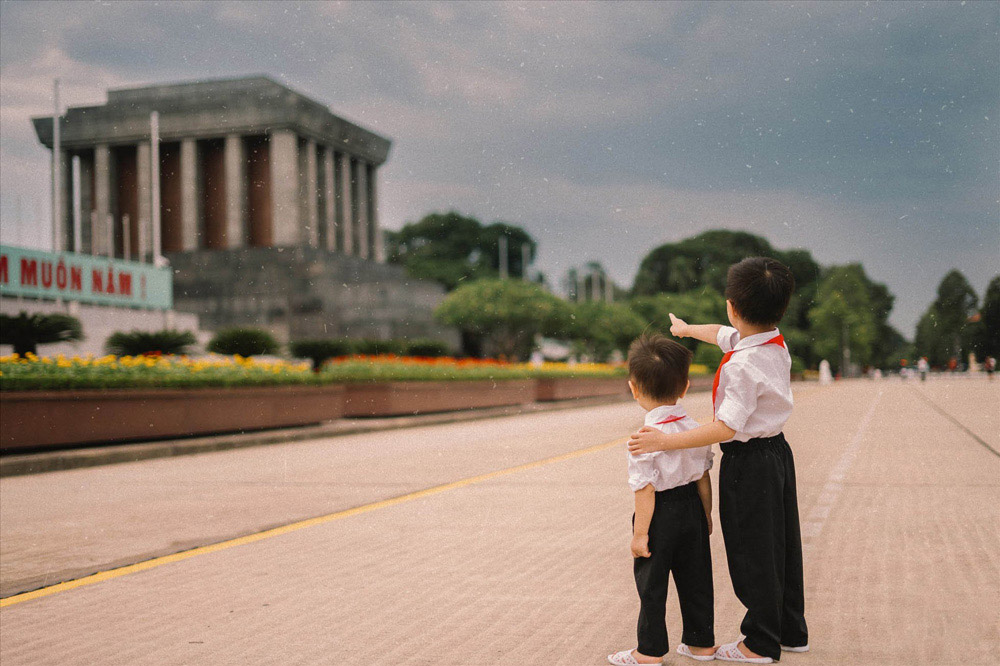
In a city as lively and layered as Hanoi, having a reliable map in your pocket makes all the difference. The narrow streets, countless alleyways, and hidden gems are part of the city’s charm — but they can also be a little confusing at first. That’s why Google Maps is every traveler’s best friend. With a few smart tricks, you can turn it into your very own Hanoi map guide, helping you find your way with confidence and ease.
Before you step out of your hotel’s Wi-Fi, take a moment to download an offline map of Hanoi on your Google Maps app. It only takes a minute but can save you from a lot of stress later. Once downloaded, you can navigate without mobile data — perfect for when you’re exploring the Old Quarter’s maze-like lanes or heading to temples and cafés a bit off the beaten path. Think of it as carrying a digital compass that always works, even when your signal doesn’t.
When searching for places, use their Vietnamese names for the best results. For example, look up “Hồ Hoàn Kiếm” instead of just “Hoan Kiem Lake,” or “Nhà thờ Lớn Hà Nội” instead of “St. Joseph’s Cathedral.” Many listings on Google Maps are written in Vietnamese, so this small trick helps you get the most accurate directions and nearby recommendations. Plus, learning a few local names makes it easier to ask for help if you get turned around — locals will appreciate the effort!
Before your trip, spend a few minutes “starring” your must-visit spots — your hotel, cafés, restaurants, attractions, and even airport. These will show up as gold stars on your personal Hanoi map, creating your own customized travel guide. It’s an easy way to visualize your day’s itinerary and see how everything connects geographically. You can even use color-coded labels to group your saved spots, like green for food, blue for sightseeing, and red for shopping.
With these simple tips, your Google Maps becomes more than a navigation tool — it becomes your personalized Hanoi map for tourists, ready to guide you through every turn, hidden café, and sunset view.
Still have a few questions before diving into your Hanoi map? Here are quick, practical answers to help you plan your visit and make the most of your time in Vietnam’s capital.
If it’s your first visit, you can’t go wrong with the Hoan Kiem District, especially the Old Quarter. It’s where everything happens — from vibrant street markets to cozy cafés and must-see landmarks like Hoan Kiem Lake. You’ll be within walking distance of top attractions, restaurants, and endless photo opportunities. For most travelers, this is the perfect base to experience the true rhythm of Hanoi.
Hanoi is celebrated for its incredible mix of history, culture, and cuisine. The city has stood for over a thousand years, preserving its old-world charm through narrow lanes, colonial buildings, and tranquil lakes. Visitors fall in love with its street food — especially Phở and Bún Chả — and the way life unfolds on every corner, from early morning coffee rituals to evening strolls around the lake.
If you’re checking your calendar, plan your trip between September and November. These autumn months are widely considered the best time to visit, offering mild temperatures, golden sunlight, and just the right amount of cool breeze. It’s also the perfect season for exploring the city on foot with your Hanoi map in hand.
That depends on what you’re looking for. Hanoi is the country’s cultural and political capital — slower-paced, more traditional, and rich in heritage. Ho Chi Minh City (Saigon), on the other hand, is the economic powerhouse of the south — modern, energetic, and cosmopolitan. Many travelers love visiting both to experience Vietnam’s contrasting personalities.
A paper map is great for getting an overview of the city layout, but for day-to-day exploring, Google Maps wins hands down. It’s especially useful in the Old Quarter, where streets twist, turn, and sometimes change names mid-block. Download your map offline before heading out, and you’ll never lose your way.
Mastering the Hanoi city map is more than just learning how to get from one place to another — it’s the key to turning what might seem like a confusing city into a playground of discovery. Once you understand where each district fits and how they connect, exploring becomes effortless. With your phone in hand, a bit of curiosity, and a sense of adventure, you’ll quickly find that getting “lost” in Hanoi isn’t something to avoid — it’s part of the fun.
So, before you head out, download your offline map, mark a few must-visit spots, and start your day in the Old Quarter. Let the sound of sizzling street food, the buzz of motorbikes, and the charm of hidden alleyways guide you. The best moments in Hanoi often happen when you wander off the map — when you stumble upon a quiet temple courtyard, a family-run coffee shop, or a view of Hoan Kiem Lake at sunset that you didn’t plan to find.
Planning your Vietnam trip? If you’d like to explore Hanoi and the rest of Vietnam without the hassle of organizing every detail, let Asia Mystika, a trusted local tour operator, make it simple. From personalized itineraries and guided city tours to local food adventures and scenic escapes, we help travelers experience Vietnam with comfort and authenticity.
Contact Asia Mystika today to plan your unforgettable journey through Hanoi — where every corner of the map has a story waiting to be discovered.
WhatsApp: (+84) 866.22.7878
Planning trip: Click here
Email: sales@asiamystika.com
Website: www.asiamystika.com
Asia Mystika Profile: Click Here

